Discover the ultimate guide to a high-protein vegetarian diet with delicious recipes and helpful tips. Learn how to get all the essential nutrients your body needs while enjoying a plant-based lifestyle.
Introduction
If you’re a vegetarian looking to build muscle, lose weight, or simply maintain a healthy diet, you might be concerned about getting enough protein. While meat is often seen as the go-to protein source, there are plenty of vegetarian-friendly options available that can provide the nutrients your body needs. In this ultimate guide, we’ll dive into the world of high-protein vegetarian diets and explore the best tips, tricks, and tasty recipes for achieving your health goals. Whether you’re a longtime vegetarian or just starting out, this guide is for you. So let’s get started!
Understanding Protein and Vegetarian
Protein
Importance of protein in the diet
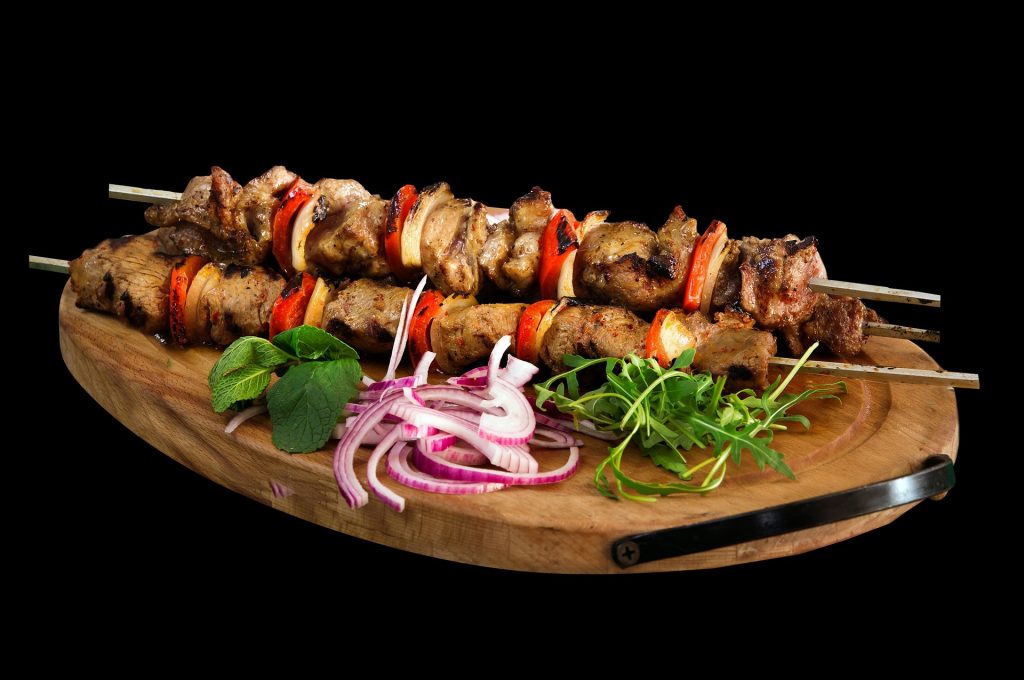
Protein is an essential macronutrient that plays a vital role in many of the body’s functions. It is responsible for building and repairing tissues, making enzymes and hormones, supporting the immune system, and producing energy. Without enough protein in our diet, we may experience fatigue, weakened immune system, loss of muscle mass, and slow wound healing.
Protein also plays a crucial role in weight management, as it can help us feel full and satisfied after a meal, reducing the likelihood of overeating. Additionally, research has shown that diets higher in protein may help boost metabolism and promote fat loss.
For vegetarians, it’s especially important to make sure they’re getting enough protein, as many plant-based sources of protein are incomplete and may lack certain essential amino acids. By incorporating a variety of high-protein plant foods into their diet, vegetarians can ensure that they’re meeting their protein needs and enjoying a range of delicious and nutritious meals.
Different types of protein and their functions
Proteins are made up of chains of amino acids and there are various types of proteins, each with a different function in the body. Here are some of the most common types of proteins and their functions:
- Enzymes: Enzymes are proteins that catalyze chemical reactions in the body. They play a key role in digestion, metabolism, and many other biological processes.
- Structural Proteins: Structural proteins provide support and shape to cells and tissues in the body. Examples include collagen, which makes up our skin, bones, and connective tissues, and keratin, which forms our hair and nails.
- Transport Proteins: Transport proteins, such as hemoglobin, help move substances, such as oxygen and nutrients, throughout the body.
- Hormones: Hormones are proteins that act as messengers in the body, regulating various physiological processes. Examples include insulin, which regulates blood sugar levels, and growth hormone, which promotes growth and development.
- Antibodies: Antibodies are proteins that help the body fight off infection by recognizing and neutralizing foreign invaders, such as bacteria and viruses.
- Contractile Proteins: Contractile proteins, such as actin and myosin, are responsible for muscle contraction and movement.
- Storage Proteins: Storage proteins, such as casein and ferritin, store essential nutrients, such as calcium and iron, in the body.
By incorporating a variety of protein-rich foods into their diet, vegetarians can ensure that they’re getting a range of these essential proteins and supporting various functions in their body.
Recommended daily protein intake for vegetarians
As a vegetarian, it’s important to ensure you’re meeting your daily protein needs. The recommended daily protein intake for adults is approximately 0.8 grams per kilogram of body weight, but this can vary depending on factors such as age, gender, activity level, and overall health status. Vegetarians, in particular, need to be mindful of consuming enough protein as they exclude meat, which is a primary source of protein for many people. In fact, studies have shown that vegetarians may have lower protein intakes compared to their meat-eating counterparts. However, there are plenty of plant-based protein sources that can help vegetarians meet their daily protein needs. In the following sections, we’ll explore some of the best sources of protein for vegetarians.
Certainly! Here is a more detailed section on some of the best sources of protein for vegetarians:
Beans and Legumes
Beans and legumes are a great source of protein for vegetarians. They are also high in fiber, vitamins, and minerals, making them a nutritious addition to any vegetarian diet. Some examples of beans and legumes that are high in protein include black beans, lentils, chickpeas, kidney beans, and navy beans. These can be incorporated into a variety of dishes, such as soups, stews, salads, and dips.
Nuts and Seeds
Nuts and seeds are another excellent source of protein for vegetarians. They also contain healthy fats, vitamins, and minerals, which make them a great addition to a balanced diet. Examples of high-protein nuts and seeds include almonds, peanuts, chia seeds, flaxseeds, and sunflower seeds. These can be eaten as a snack, added to smoothies or oatmeal, or used to make nut butter.
Soy Products
Soy products, such as tofu and tempeh, are a popular source of protein for vegetarians. They are also high in other nutrients, such as iron and calcium. Tofu can be used in a variety of dishes, such as stir-fries, sandwiches, and salads, while tempeh can be used as a meat substitute in dishes like burgers and tacos.
Whole Grains
Whole grains, such as quinoa, brown rice, and barley, are another good source of protein for vegetarians. These grains are also high in fiber, vitamins, and minerals, which make them a nutritious addition to any diet. Quinoa, in particular, is considered a complete protein because it contains all nine essential amino acids.
Dairy Products
Dairy products, such as milk, cheese, and yogurt, are also a good source of protein for lacto-ovo vegetarians. They are also high in calcium, which is important for maintaining healthy bones. However, it’s important to choose low-fat or fat-free dairy products to limit saturated fat intake.
Overall, there are plenty of protein sources for vegetarians to choose from. By incorporating a variety of these foods into your diet, you can ensure you’re meeting your daily protein needs and maintaining a healthy, balanced diet.
Vegetarianism
Different types of vegetarianism
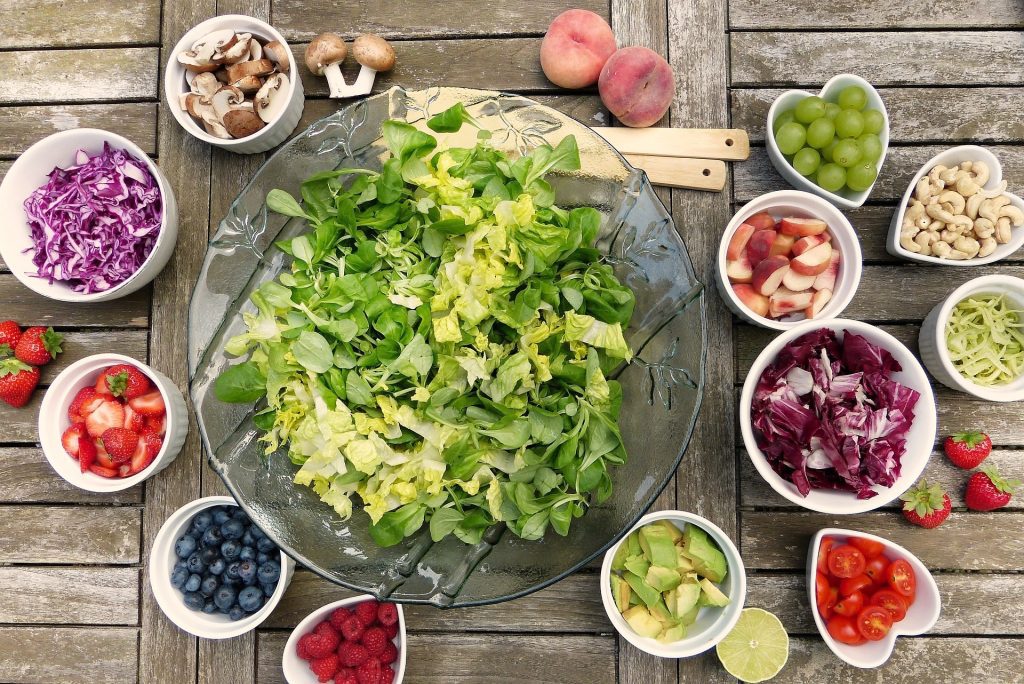
Vegetarianism is a dietary lifestyle that abstains from consuming meat, fish, and poultry. However, there are different types of vegetarianism, which vary based on the level of restriction of animal products in the diet. Here are some of the most common types of vegetarianism:
- Lacto-ovo vegetarianism: This is the most common type of vegetarianism, which involves the exclusion of meat, fish, and poultry, but allows for the consumption of eggs and dairy products.
- Lacto vegetarianism: This type of vegetarianism allows for the consumption of dairy products but excludes meat, fish, poultry, and eggs.
- Ovo vegetarianism: Ovo-vegetarians exclude meat, fish, and poultry, as well as dairy products, but consume eggs.
- Veganism: Vegans exclude all animal products from their diet, including meat, fish, poultry, dairy, eggs, honey, and other animal-derived products.
- Pescatarianism: Pescatarians exclude meat and poultry but allow for the consumption of fish and other seafood.
- Flexitarianism: Also known as semi-vegetarianism, flexitarianism involves a mostly plant-based diet with occasional consumption of meat, fish, or poultry.
It is essential for individuals following a vegetarian diet to choose a type that suits their preferences and nutritional needs.
Common vegetarian protein sources
As a vegetarian, it’s important to know which foods are good sources of protein, so you can meet your daily protein needs. Here are some common vegetarian protein sources:
- Legumes: Lentils, beans, peas, and chickpeas are great sources of protein. They are also rich in fiber and other nutrients.
- Nuts and seeds: Almonds, peanuts, sunflower seeds, chia seeds, and hemp seeds are high in protein and healthy fats.
- Whole grains: Quinoa, brown rice, and whole wheat pasta are examples of whole grains that provide protein, as well as fiber and other essential nutrients.
- Dairy products: Milk, cheese, and yogurt are good sources of protein for lacto-vegetarians.
- Eggs: Eggs are a good source of protein for ovo-vegetarians.
- Soy products: Tofu, tempeh, and edamame are all excellent sources of protein and can be used in a variety of dishes.
- Seitan: Seitan, also known as wheat meat or wheat protein, is made from wheat gluten and is a popular meat substitute that is high in protein.
By incorporating a variety of these vegetarian protein sources into your meals and snacks, you can ensure that you are meeting your daily protein needs.
Potential nutritional deficiencies in a vegetarian diet and how to avoid them
While a well-planned vegetarian diet can provide all the essential nutrients that the body needs, there are certain nutritional deficiencies that vegetarians need to be aware of and take steps to avoid.
Protein:
As mentioned earlier, a vegetarian diet can be rich in protein as long as one includes a variety of protein sources in their diet. Some good sources of protein for vegetarians include legumes, tofu, tempeh, seitan, nuts, seeds, and whole grains.
Vitamin B12:
This vitamin is crucial for the proper functioning of the nervous system and the production of red blood cells. Vitamin B12 is primarily found in animal products, which means that vegans and some vegetarians who avoid dairy and eggs are at risk of deficiency. Fortified foods and supplements can be good sources of vitamin B12 for vegetarians.
Iron:
Vegetarian sources of iron include leafy green vegetables, legumes, whole grains, nuts, and seeds. However, the body doesn’t absorb the iron from plant sources as well as it does from animal sources, so vegetarians need to make sure they get enough iron by including iron-rich foods in their diet and by consuming vitamin C-rich foods that can enhance the absorption of iron.
Calcium:
While dairy products are the most common source of calcium, vegetarians can get this mineral from plant-based sources such as leafy greens, broccoli, fortified plant milks, tofu, and fortified breakfast cereals.
Omega-3 fatty acids:
These healthy fats are important for brain health, heart health, and reducing inflammation in the body. While omega-3s are primarily found in fatty fish, vegetarians can get them from plant-based sources such as flaxseeds, chia seeds, hemp seeds, walnuts, and algae-based supplements.
By being aware of these potential nutritional deficiencies and including a variety of nutrient-dense foods in their diet, vegetarians can meet their nutritional needs and maintain optimal health. Consulting a registered dietitian can also be helpful for developing a balanced and nutrient-rich vegetarian meal plan.
Tips and Tricks for a High-Protein Vegetarian Diet
Building a Balanced Meal Plan
Macronutrient balance for a high-protein vegetarian diet
A high-protein vegetarian diet should also maintain a balance of macronutrients. Along with protein, carbohydrates and fats are also essential macronutrients that the body needs to function properly. A healthy macronutrient balance for a high-protein vegetarian diet is:
- Protein: 25-30% of daily calorie intake
- Carbohydrates: 45-50% of daily calorie intake
- Fat: 20-25% of daily calorie intake
It’s important to choose healthy sources of carbohydrates and fats to maintain optimal health. Good carbohydrate sources include whole grains, fruits, and vegetables, while healthy fat sources include nuts, seeds, avocado, and olive oil.
It’s also important to consider the quality of macronutrients. For example, consuming a high amount of refined carbohydrates and saturated fats can be detrimental to health, while choosing complex carbohydrates and healthy fats can provide numerous health benefits. A balanced and varied diet, including a variety of fruits, vegetables, whole grains, nuts, and seeds, can help to ensure adequate macronutrient balance.
Importance of variety in a vegetarian diet
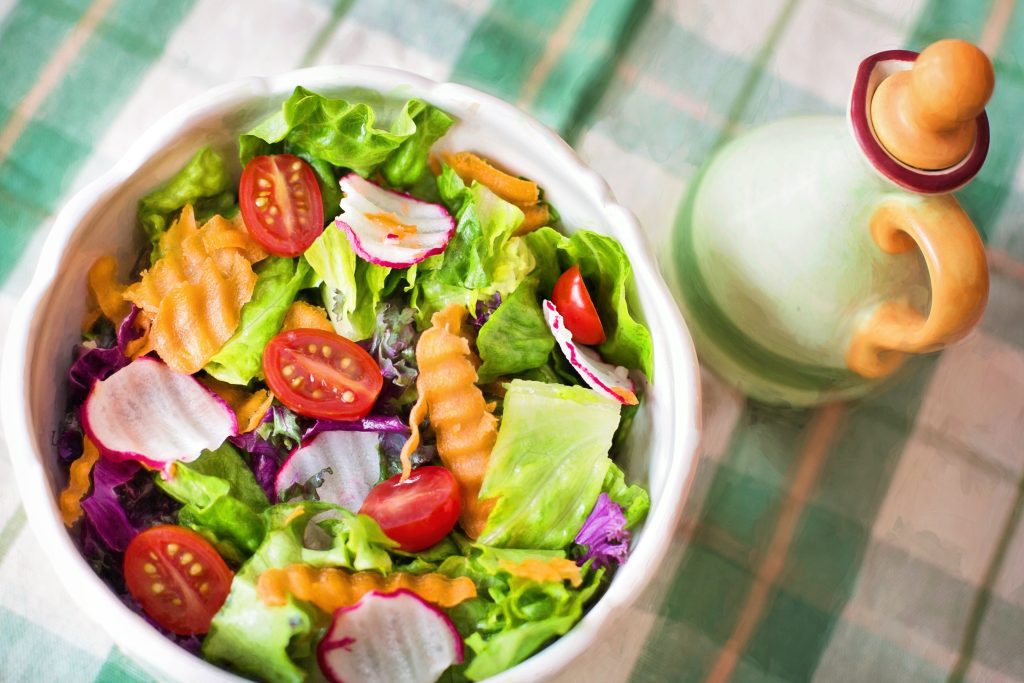
Variety is essential for any healthy diet, including a high-protein vegetarian one. A diverse range of foods can provide a variety of nutrients, which helps to ensure that your body is getting all the nutrients it needs to function properly. Eating a wide range of foods also helps to prevent boredom with your diet and keeps meals interesting and enjoyable.
Incorporating different protein sources into your diet is especially important to ensure that you are getting all the essential amino acids that your body needs. For example, if you are relying on plant-based sources of protein, such as legumes, nuts, and seeds, it is important to vary your choices and eat a combination of different sources. This can help to ensure that you are getting all the essential amino acids your body needs to build and repair tissues, maintain muscle mass, and support other vital functions.
Variety in your diet also helps to prevent the development of food intolerances and allergies that can occur from consuming the same foods over and over again. In addition, a diverse range of plant-based foods can provide different phytonutrients, antioxidants, and fiber that can help to support overall health and reduce the risk of chronic diseases.
To incorporate variety into your high-protein vegetarian diet, try experimenting with different types of grains, legumes, nuts, and seeds. Consider adding a variety of fruits and vegetables, including seasonal produce. Try new recipes and cuisines to keep your meals interesting and enjoyable. With a little creativity and planning, it is easy to incorporate a wide range of nutritious and delicious foods into your vegetarian diet.
Meal planning and prep tips
When it comes to maintaining a high-protein vegetarian diet, meal planning and prep are key. Here are some tips to help you plan and prepare your meals for the week:
- Plan your meals in advance: Take some time each week to plan out your meals and snacks for the upcoming week. This will help you stay on track and avoid making unhealthy food choices when you’re short on time.
- Choose recipes that are high in protein: Look for recipes that are packed with protein-rich ingredients, such as beans, lentils, tofu, tempeh, quinoa, and seitan. Make sure to also include a variety of fruits and vegetables to ensure you’re getting a balanced diet.
- Batch cook your meals: Batch cooking can save you a lot of time during the week. Choose a day of the week when you have some extra time, and cook a few large batches of your favorite recipes. Store the leftovers in the fridge or freezer and enjoy them throughout the week.
- Prep your ingredients in advance: Spend some time washing, chopping, and prepping your ingredients in advance. This can help you save time when you’re cooking during the week.
- Invest in quality storage containers: To make sure your meals stay fresh and delicious throughout the week, invest in high-quality storage containers. Glass containers are a great option as they are microwave and dishwasher safe, and they won’t stain or hold onto flavors.
By planning and prepping your meals in advance, you can set yourself up for success on a high-protein vegetarian diet. With a little bit of effort and organization, you can enjoy delicious and nutritious meals all week long.
Snacks and Supplements
High-protein vegetarian snacks
Snacking can be an important part of a vegetarian’s high-protein diet. Snacks can help keep hunger at bay and provide a much-needed energy boost during the day. However, not all snacks are created equal. Some snacks can be high in sugar or unhealthy fats, leading to a spike in blood sugar and a subsequent energy crash. Vegetarians need snacks that are both high in protein and nutrient-dense to support their active lifestyle.
Luckily, there are plenty of high-protein vegetarian snacks to choose from. Here are some options to consider:
Greek yogurt:
With nearly 20 grams of protein per serving, Greek yogurt is a filling and nutritious snack. Try adding some fresh fruit or nuts to make it even more satisfying.
Hummus:
Made from chickpeas, hummus is a great source of protein and fiber. Dip some veggies or whole-grain crackers into a serving of hummus for a snack that will keep you going.
Edamame:
These little soybean pods are high in protein and fiber, making them a filling snack. Edamame can be enjoyed steamed or roasted with a sprinkle of sea salt.
Nut butter:
Peanut, almond, and cashew butters are all great sources of protein and healthy fats. Spread a tablespoon on some whole-grain crackers or apple slices for a delicious snack.
Roasted chickpeas:
Roasting chickpeas in the oven can turn them into a crunchy and flavorful snack. Chickpeas are high in protein and fiber, making them a great choice for vegetarians.
Cottage cheese:
Another dairy-based snack, cottage cheese is high in protein and low in fat. Add some fresh berries or a sprinkle of cinnamon for a tasty and nutritious snack.
Trail mix:
A mix of nuts, seeds, and dried fruit can be a filling and protein-rich snack. However, be sure to choose a mix without added sugar or unhealthy oils.
By choosing high-protein vegetarian snacks like these, vegetarians can keep their energy levels up and stay satisfied between meals.
Protein supplements for vegetarians
Protein supplements can be a convenient and effective way for vegetarians to meet their daily protein needs. While it’s always best to get nutrients from whole foods, supplements can be helpful for those who struggle to get enough protein through their diet alone, or for those who have increased protein needs due to factors such as regular exercise or pregnancy.
Variety of protein supplements
There are a variety of protein supplements available that are suitable for vegetarians, including whey protein, casein protein, soy protein, pea protein, and hemp protein. However, not all protein supplements are created equal, so it’s important to read labels and choose high-quality products.
Soy protein is a popular choice for vegetarians as it contains all nine essential amino acids and is easily digestible. Pea protein is another good option, as it is highly digestible and contains a high amount of the amino acid lysine. Hemp protein is a complete protein source and is also a good source of omega-3 fatty acids.
It’s important to note that while protein supplements can be a helpful addition to a vegetarian diet, they should not be relied on as the primary source of protein. Whole foods should always be the foundation of a healthy and balanced diet.
When choosing a protein supplement, it’s important to consider factors such as the protein source, quality, and purity. Look for products that are free from additives and fillers, and choose brands that have been third-party tested for quality and purity.
It’s also important to follow the recommended dosage and not exceed the daily recommended intake of protein. Overconsumption of protein can lead to health problems such as kidney damage and dehydration.
In summary, while protein supplements can be a helpful addition to a vegetarian diet, they should not be relied on as the primary source of protein. Choose high-quality products from reputable brands, and always prioritize whole foods as the foundation of a healthy and balanced diet.
How to read nutrition labels for protein content
Nutrition labels provide important information about the food we consume, including the amount of protein it contains. Here are some tips on how to read nutrition labels to determine the protein content:
- Look for the serving size: The serving size is the amount of food that the nutrition label refers to. Make sure to check the serving size, as the protein content listed is based on that amount of food.
- Check the total protein: The total protein is listed in grams and is typically located near the top of the nutrition label. This is the amount of protein in one serving of the food.
- Calculate the percentage of daily value: The percentage of daily value (%DV) is based on the recommended daily intake of protein, which is 50 grams for adults. To determine the %DV of protein in one serving of the food, divide the amount of protein per serving by 50 grams and multiply by 100.
- Check the source of protein: The nutrition label may also provide information about the source of protein, such as whether it comes from animal or plant-based sources. If you are following a vegetarian diet, make sure to check that the protein source is vegetarian-friendly.
- Look out for additives: Some protein sources may contain additives, such as sugars or artificial flavors. Make sure to check the ingredients list to ensure that the protein source is clean and does not contain any unnecessary additives.
By following these tips, you can make informed choices about the protein content of the food you consume and ensure that you are getting the right amount of protein in your diet.
Eating Out and Traveling
Tips for eating out as a vegetarian
Eating out as a vegetarian can sometimes be a challenge, but it doesn’t have to be. With a little preparation and knowledge, it’s possible to enjoy a delicious and satisfying meal at your favorite restaurant.

Here are some tips for eating out as a vegetarian:
- Research the restaurant in advance: Look up the menu online to see what vegetarian options are available. Some restaurants have a separate vegetarian menu, while others may have a few vegetarian options listed on the main menu.
- Be specific when ordering: Let your server know that you’re a vegetarian and ask if there are any dishes that can be modified to be made vegetarian. Be specific about what you can and can’t eat.
- Look for hidden ingredients: Some dishes may seem vegetarian, but they may contain hidden ingredients like chicken broth, fish sauce, or lard. Don’t be afraid to ask your server about the ingredients in a particular dish.
- Be open to substitutions: If a dish comes with meat or dairy, ask if it can be substituted with a vegetarian protein or dairy-free alternative.
- Don’t be afraid to customize your order: If there aren’t any vegetarian options on the menu, ask if the chef can create a dish for you using the available ingredients. Many chefs are happy to accommodate dietary restrictions.
- Choose ethnic cuisine: Ethnic cuisines like Indian, Middle Eastern, and Thai often have a variety of vegetarian options on the menu.
- Be patient: Sometimes it may take a little longer for the kitchen to prepare a vegetarian dish, so be patient and enjoy the company of your dining companions.
With these tips, you can enjoy eating out as a vegetarian without compromising your dietary restrictions.
Vegetarian options when traveling
Traveling as a vegetarian can be challenging, especially when visiting a new place where you may not be familiar with the local cuisine or restaurants. However, with some careful planning and research, it is possible to find delicious vegetarian options that will keep you fueled and satisfied while on the go.
One of the best ways to prepare for travel as a vegetarian is to research the local cuisine and popular restaurants in advance. You can use travel guides, websites, and social media to find restaurants that serve vegetarian food or have vegetarian options on their menu. You can also reach out to local vegetarians or vegetarian groups for recommendations.
When booking accommodations, consider staying at places that offer kitchen facilities or at least a mini-fridge in the room. This will allow you to prepare simple meals and snacks with ingredients from local markets or grocery stores.
When dining out, look for vegetarian options such as vegetable stir-fries, salads, pasta dishes, bean-based dishes, or veggie burgers. Don’t be afraid to ask your server or chef if they can prepare a vegetarian dish for you, as many restaurants are happy to accommodate dietary preferences.
If you are traveling to a country where the local cuisine is not very vegetarian-friendly, you may need to get creative with your meals. Consider packing some non-perishable vegetarian snacks such as protein bars, nuts, and dried fruit to keep you fueled in between meals. You may also want to bring a small portable blender or food processor to make smoothies or purees.
Overall, traveling as a vegetarian requires some extra planning and preparation, but with the right mindset and a little bit of research, you can enjoy delicious and nutritious vegetarian meals while exploring new places.
How to maintain a high-protein diet while away from home
Maintaining a high-protein vegetarian diet while traveling can be a challenge, but with a little planning and preparation, it is possible to continue to meet your nutritional needs even while away from home. Here are some tips to help you maintain a high-protein diet while on the go:
Pack protein-rich snacks:
Whether you are traveling by plane, train, or car, having protein-rich snacks on hand can help you stay satiated and energized throughout your journey. Consider packing items like nuts, seeds, protein bars, or roasted chickpeas to keep you fueled on the go.
Research restaurants in advance:
If you are traveling to a new city or country, research restaurants in advance to find vegetarian-friendly options with protein-rich dishes. Many restaurants now offer vegetarian and vegan options, and with a little planning, you can find delicious and nutritious meals to enjoy.
Seek out local markets:
When traveling, visiting local markets can be a great way to find fresh fruits and vegetables, as well as protein-rich plant-based foods. Look for vendors selling beans, lentils, tofu, tempeh, or seitan, and experiment with new recipes and flavors.
Bring your own protein powder:
If you rely on protein powder to supplement your protein intake, consider bringing a small container of your favorite powder with you on your travels. Simply mix it with water or plant-based milk for an easy and convenient protein boost.
Make use of your hotel room:
If you are staying in a hotel with a kitchenette, take advantage of it to prepare your own high-protein vegetarian meals. Stock up on items like fresh vegetables, canned beans, and tofu or tempeh, and experiment with different recipes and flavors.
By following these tips, you can maintain a high-protein vegetarian diet even while away from home. Remember to stay hydrated, get plenty of rest, and enjoy your travels!
High-Protein Vegetarian Recipes
Breakfast Recipes
High-protein vegetarian breakfast ideas
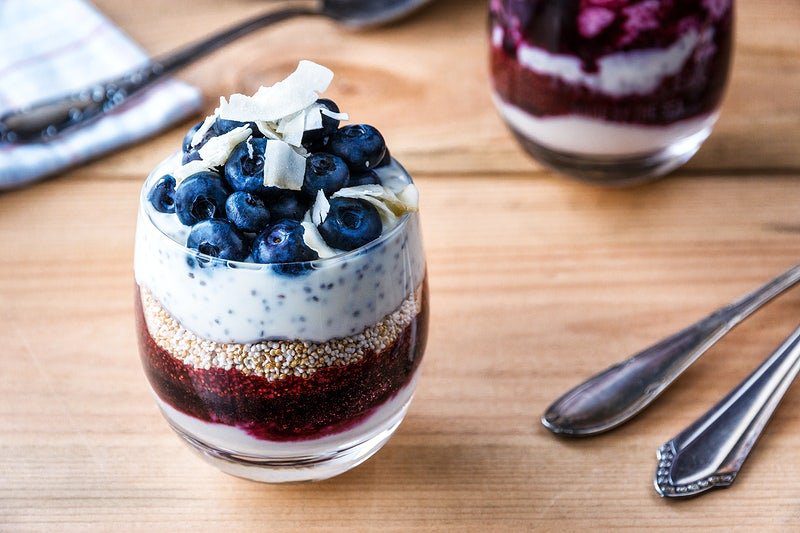
Starting the day with a high-protein breakfast is an excellent way to fuel your body and keep you full until your next meal. But for vegetarians, it can be a bit tricky to find breakfast options that are both high in protein and meat-free. Luckily, there are plenty of delicious and nutritious vegetarian breakfast ideas that will give you the protein you need to start your day off right.
Scrambled Tofu:
Tofu is a fantastic source of protein, and scrambled tofu is an easy and delicious vegetarian alternative to scrambled eggs. Add some veggies like spinach, bell peppers, and mushrooms for an extra boost of nutrients.
Protein Smoothie:
A protein smoothie is a quick and easy way to get a high-protein breakfast on the go. Blend together some fruit, protein powder, and your favorite milk or yogurt for a tasty and filling meal.
Greek Yogurt with Nuts and Fruit:
Greek yogurt is an excellent source of protein, and when topped with nuts and fruit. It becomes a delicious and healthy breakfast option. Try adding some berries, almonds, and honey for a sweet and crunchy breakfast treat.
Protein Pancakes:
Pancakes are always a popular breakfast option, and when made with protein powder. They become a high-protein meal that is both delicious and nutritious. Top your pancakes with peanut butter, bananas, and a drizzle of maple syrup for a protein-packed breakfast that tastes like dessert.
Quinoa Breakfast Bowl:
Quinoa is an excellent source of protein, and when mixed with veggies, eggs, or tofu, it becomes a tasty and nutritious breakfast option. Add some avocado, salsa, and cilantro for a Mexican-inspired breakfast bowl that is both filling and delicious.
These are just a few examples of high-protein vegetarian breakfast options. With a little creativity and some planning, you can easily create a variety of protein-packed breakfast meals. That will keep you fueled and energized throughout the day.
How to incorporate protein into your morning routine
Incorporating protein into your morning routine can help keep you feeling energized and full throughout the day. Here are a few ideas for adding protein to your breakfast:
- Add protein-rich toppings: Try adding nuts, seeds, or nut butter to your oatmeal or yogurt to add some extra protein. You can also sprinkle chia seeds or hemp hearts over your toast or smoothie bowl.
- Use high-protein flours: Swap out regular flour for high-protein flours like almond flour or chickpea flour to make pancakes or waffles. These flours are also great for making high-protein muffins and bread.
- Try tofu scrambles: Tofu is a great source of protein, and it makes a delicious and filling breakfast scramble. You can add veggies, cheese, and spices to make it even more flavorful.
- Make high-protein smoothies: Smoothies are a quick and easy breakfast option that can be loaded with protein. Use Greek yogurt or a plant-based protein powder as a base, and add fruits and veggies for a nutrient-packed meal.
- Bake your breakfast: Try making high-protein breakfast bars or muffins ahead of time for a quick and easy breakfast on-the-go. These can be made with ingredients like oats, protein powder, nuts, and seeds.
Remember, getting enough protein in the morning is important for keeping you full and satisfied throughout the day. Try incorporating some of these ideas into your morning routine to make sure you’re getting enough protein to fuel your day.
Recipes for smoothies, muffins, and other breakfast dishes
Here are a few high-protein vegetarian breakfast recipes:
High-Protein Berry Smoothie:
- 1 cup unsweetened almond milk
- 1 scoop vanilla protein powder
- 1/2 cup frozen mixed berries
- 1/2 banana
- 1 tablespoon chia seeds Blend all ingredients until smooth and enjoy!
Protein-Packed Veggie Muffins:
- 1 cup quinoa flour
- 1/2 cup rolled oats
- 1/4 cup nutritional yeast
- 1/4 cup hemp hearts
- 2 teaspoons baking powder
- 1 teaspoon garlic powder
- 1 teaspoon onion powder
- 1/2 teaspoon sea salt
- 1/2 teaspoon black pepper
- 2 flax eggs (2 tablespoons ground flaxseed mixed with 6 tablespoons water)
- 1/4 cup unsweetened almond milk
- 1/4 cup melted coconut oil
- 1 cup grated zucchini
- 1/2 cup grated carrot
Preheat the oven to 375°F (190°C) and grease a muffin tin. In a large bowl, mix together the flour, oats, nutritional yeast, hemp hearts, baking powder, garlic powder, onion powder, salt, and pepper. In another bowl, whisk together the flax eggs, almond milk, and coconut oil. Add the wet ingredients to the dry ingredients and stir until well combined. Fold in the grated zucchini and carrot. Spoon the batter into the prepared muffin tin and bake for 20-25 minutes or until a toothpick comes out clean.
Chickpea Omelet:
- 1/2 cup chickpea flour
- 1/2 cup water
- 1/4 teaspoon sea salt
- 1/4 teaspoon turmeric
- 1/4 teaspoon paprika
- 1/4 teaspoon garlic powder
- 1/4 teaspoon onion powder
- 1 tablespoon nutritional yeast
- 1/4 cup diced bell pepper
- 1/4 cup diced onion
- 1/4 cup sliced mushrooms
- 1/4 cup fresh spinach
- 1/4 cup crumbled feta cheese
- 1 tablespoon chopped fresh herbs (such as parsley or chives)
In a large bowl, whisk together the chickpea flour, water, salt, turmeric, paprika, garlic powder, onion powder, and nutritional yeast until smooth. Heat a non-stick skillet over medium heat and pour in the chickpea batter. Cook for 2-3 minutes or until the edges start to lift away from the pan. Sprinkle the bell pepper, onion, mushrooms, spinach, feta cheese, and fresh herbs over one side of the omelet. Use a spatula to fold the other side over the filling and cook for an additional 2-3 minutes. Or until the cheese is melted and the omelet is set.
Lunch and Dinner Recipes
High-protein vegetarian lunch and dinner ideas
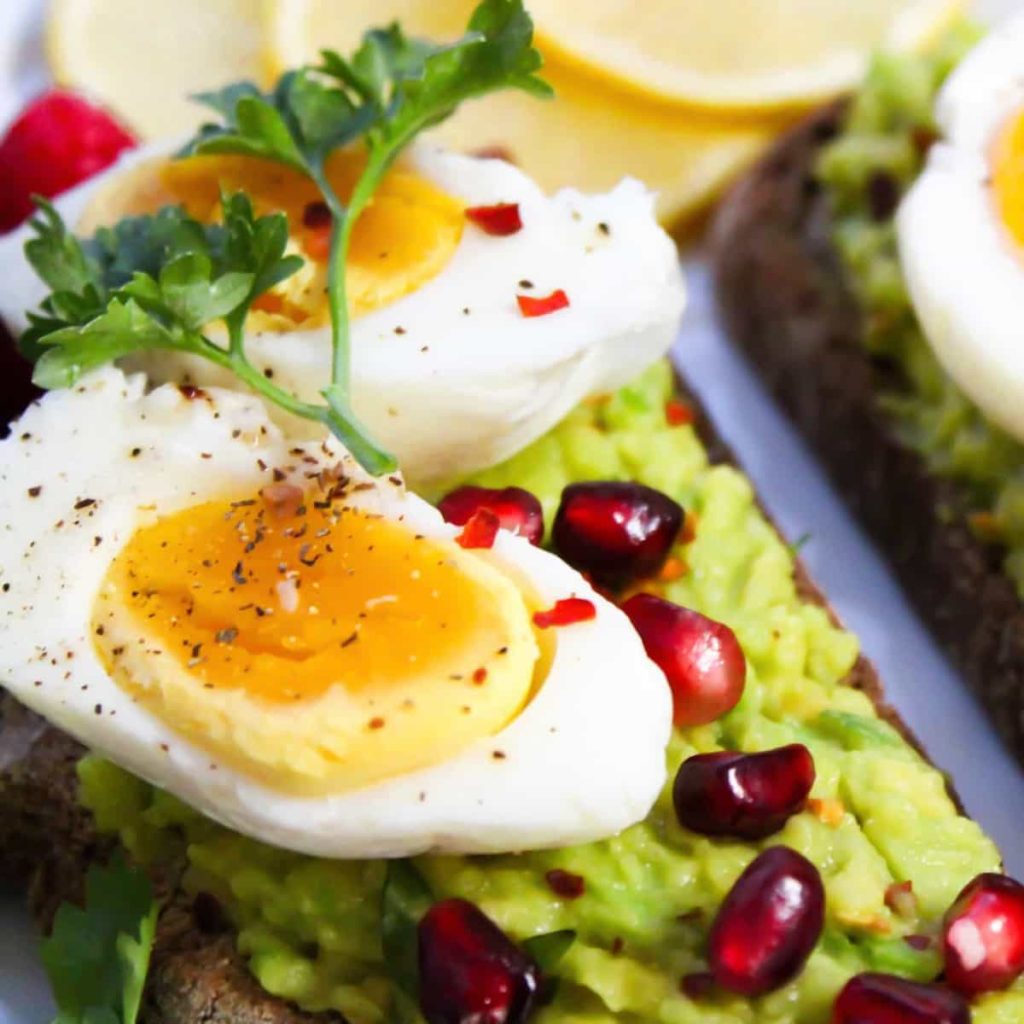
Here are some high-protein vegetarian lunch and dinner ideas:
- Quinoa and Black Bean Salad: Cooked quinoa and black beans mixed with red onion, chopped tomatoes, fresh cilantro, lime juice, and olive oil.
- Tofu Stir Fry: Sautéed tofu and mixed vegetables (such as broccoli, carrots, and peppers) served over brown rice or quinoa.
- Lentil Soup: Cooked lentils simmered with onions, garlic, carrots, celery, and vegetable broth.
- Chickpea Curry: Cooked chickpeas in a creamy tomato and coconut milk-based sauce, served over rice or with naan bread.
- Grilled Portobello Mushroom Burgers: Grilled portobello mushroom caps served on a whole grain bun with avocado, lettuce, tomato, and a smear of hummus.
- Roasted Vegetable Pasta: Roasted vegetables (such as zucchini, bell peppers, and eggplant) served over whole grain pasta with a drizzle of olive oil and grated Parmesan cheese.
- Mexican Quinoa Bowl: Cooked quinoa mixed with black beans, corn, diced tomatoes, diced avocado, and salsa.
- Sweet Potato and Black Bean Enchiladas: Roasted sweet potatoes and black beans rolled in tortillas and topped with enchilada sauce and shredded cheese.
- Veggie Burger with Avocado: A veggie burger served on a whole grain bun with avocado, lettuce, tomato, and a side of sweet potato fries.
- Broiled Tofu and Vegetable Skewers: Skewers of marinated tofu, bell peppers, onions, and zucchini, broiled in the oven and served with a side of brown rice.
These are just a few examples, but there are endless possibilities for high-protein vegetarian meals.
Recipes for salads, soups, sandwiches, and entrees
Here are some high-protein vegetarian recipes for salads, soups, sandwiches, and entrees:
Salads:
- Grilled halloumi and watermelon salad: Toss together arugula, watermelon, and grilled halloumi cheese, and drizzle with balsamic glaze.
- Chickpea and avocado salad: Combine cooked chickpeas, diced avocado, cherry tomatoes, red onion, and feta cheese, and toss with a lemon vinaigrette.
- Quinoa and black bean salad: Mix together cooked quinoa, black beans, corn, red pepper, and cilantro, and dress with a lime vinaigrette.
Soups:
- Lentil and vegetable soup: Simmer lentils, carrots, celery, onion, and garlic in vegetable broth, and season with thyme, oregano, and bay leaves.
- Creamy broccoli soup: Cook broccoli, onion, and garlic in vegetable broth, and puree until smooth. Stir in cream, cheddar cheese, and nutritional yeast for a cheesy flavor.
Sandwiches:
- Caprese sandwich: Layer fresh mozzarella, tomato slices, and basil leaves on a baguette or ciabatta roll, and drizzle with balsamic glaze.
- Grilled portobello sandwich: Grill a portobello mushroom cap and place it on a ciabatta roll with avocado, arugula, and a roasted red pepper spread.
- Vegan banh mi: Toast a baguette and fill it with marinated tofu, pickled vegetables, fresh cilantro, and sriracha mayo.
Entrees:
- Lentil shepherd’s pie: Layer cooked lentils, mashed sweet potatoes, and sautéed vegetables in a casserole dish, and bake until golden brown.
- Chickpea curry: Simmer chickpeas, tomato, onion, and garlic in coconut milk and curry powder, and serve over brown rice.
- Tofu stir-fry: Sauté tofu, broccoli, bell peppers, and snow peas in a soy-ginger sauce, and serve over quinoa.
Tips for meal prepping and cooking in bulk
Meal prepping and cooking in bulk can save time and make it easier to maintain a high-protein vegetarian diet. Here are some tips to get started:
- Plan ahead: Before you start cooking, plan out your meals for the week. Choose recipes that are high in protein and can be easily prepared in advance.
- Invest in quality containers: Buy a set of high-quality containers that are sturdy and can be easily stacked in the fridge or freezer. Mason jars, glass containers, and reusable silicone bags are all good options.
- Cook in batches: Prepare large batches of grains, beans, and other protein sources at the beginning of the week. You can then use these ingredients as a base for different meals throughout the week.
- Prep fruits and vegetables: Wash, chop, and store fruits and vegetables in the fridge to make it easy to add them to meals throughout the week.
- Freeze meals: Cook and freeze individual portions of meals for easy reheating. This can be especially useful for busy nights when you don’t have time to cook.
- Use a slow cooker: A slow cooker can be a great tool for cooking large batches of protein-rich stews, soups, and curries.
- Try meal prep services: If you’re short on time, consider trying a meal prep service that specializes in vegetarian or high-protein meals.
By following these tips, you can make it easier to maintain a high-protein vegetarian diet, even when you’re short on time.
Snack and Dessert Recipes
High-protein vegetarian snack and dessert ideas
Here are some high-protein vegetarian snack and dessert ideas:
- Greek yogurt with berries and nuts: Greek yogurt is a great source of protein and pairs well with fresh berries and chopped nuts.
- Hummus and veggie sticks: Hummus is made from chickpeas, which are a good source of protein. Pair with carrot sticks, cucumber slices, or bell pepper strips for a healthy and filling snack.
- Cottage cheese and fruit: Cottage cheese is a high-protein food that can be paired with sliced peaches, pineapple, or berries for a sweet and satisfying snack.
- Roasted chickpeas: Chickpeas are a great source of plant-based protein and can be roasted with spices for a crunchy and savory snack.
- Energy bites: These no-bake treats are made with dates, nuts, and seeds and are a great high-protein snack to have on hand.
- Protein bars: There are many brands of protein bars that are vegetarian-friendly and can be a convenient snack option.
- Apple slices with almond butter: Almond butter is a good source of protein and pairs well with apple slices for a filling snack.
- Chocolate protein smoothie: Blend together chocolate protein powder, almond milk, a frozen banana, and a handful of spinach for a healthy and satisfying snack or dessert.
- Chia seed pudding: Chia seeds are a good source of plant-based protein and can be mixed with almond milk and vanilla extract to make a delicious and filling pudding.
- Baked oatmeal cups: These can be made with oats, almond milk, nuts, and seeds for a high-protein breakfast or snack that can be eaten on-the-go.
Recipes for energy bites, granola bars, and sweet treats
Here are a few high-protein vegetarian snack and dessert recipes:
- Peanut Butter Banana Protein Bites:
- 1 cup rolled oats
- 1/2 cup peanut butter
- 1/4 cup honey
- 1/2 cup mashed banana
- 1/2 cup vanilla protein powder
- 1/4 cup mini chocolate chips
Mix all ingredients together in a bowl. Roll into small balls and place on a baking sheet lined with parchment paper. Chill in the fridge for at least 30 minutes before serving.
- No-Bake Almond Butter Protein Bars:
- 1 cup almond butter
- 1/2 cup honey
- 1/2 cup vanilla protein powder
- 1/2 cup rolled oats
- 1/4 cup chopped almonds
- 1/4 cup chopped dark chocolate
Mix all ingredients together in a bowl. Press mixture into a square baking dish lined with parchment paper. Chill in the fridge for at least 30 minutes before slicing into bars.
- High-Protein Chocolate Smoothie:
- 1 banana, frozen
- 1 scoop chocolate protein powder
- 1 tbsp cocoa powder
- 1 cup unsweetened almond milk
- 1 tbsp almond butter
- 1/2 cup ice
Blend all ingredients together until smooth. Serve immediately.
- Greek Yogurt Parfait:
- 1 cup Greek yogurt
- 1/4 cup granola
- 1/4 cup mixed berries
- 1 tbsp honey
Layer all ingredients in a bowl or jar. Serve immediately.
- Chocolate Chia Seed Pudding:
- 1/2 cup chia seeds
- 2 cups unsweetened almond milk
- 1/4 cup cocoa powder
- 1/4 cup honey
- 1 tsp vanilla extract
Mix all ingredients together in a bowl. Chill in the fridge for at least 2 hours before serving.
How to make your own protein-packed snacks at home
Making your own protein-packed snacks at home can be a great way to ensure that you’re getting the nutrients you need, without relying on processed or pre-packaged foods. Here are some tips for making your own high-protein vegetarian snacks:
- Start with a protein source: Begin by choosing a protein source such as nuts, seeds, nut butters, or plant-based protein powder. These will form the foundation of your snack.
- Add in some carbs: Carbohydrates are an important energy source, and they can help balance out the protein content of your snack. Good options include fresh fruit, whole-grain crackers, or baked sweet potato chips.
- Use healthy fats: Healthy fats are important for satiety and overall health. Some great options include avocado, coconut oil, and chia seeds.
- Experiment with flavors: Adding spices, herbs, or natural sweeteners such as honey or maple syrup can help make your snacks more interesting and delicious.
Here are some recipes for high-protein vegetarian snacks that you can try making at home:
- Protein bars: Mix together nuts, seeds, and protein powder, then add in some peanut butter and honey to bind everything together. Press into a baking dish, refrigerate until firm, and then cut into bars.
- Roasted chickpeas: Drain and rinse a can of chickpeas, then toss with olive oil and seasonings of your choice. Roast in the oven until crispy.
- Trail mix: Combine nuts, seeds, and dried fruit in a container, then portion out into individual servings for an easy grab-and-go snack.
- Greek yogurt parfait: Layer Greek yogurt, fresh fruit, and granola for a high-protein snack that’s also rich in fiber and antioxidants.
- Energy bites: Blend together dates, nut butter, and oats, then roll into small balls and refrigerate until firm. These are a great option for an on-the-go snack that’s both satisfying and energizing.
Conclusion
In conclusion, following a high-protein vegetarian diet can be a great way to maintain a healthy and balanced diet. While still meeting your daily protein needs. By incorporating a variety of plant-based protein sources, planning and prepping your meals, and experimenting with new recipes. You can ensure that you are getting all of the nutrients your body needs to thrive. Additionally, with the many options for vegetarian protein supplements and the abundance of plant-based options available when eating out, maintaining a high-protein vegetarian diet has never been easier.
So, whether you are a seasoned vegetarian or just starting out, remember that the key to success is balance, variety, and a willingness to try new things. With the tips, tricks, and tasty recipes provided in this ultimate guide, you can embark on your high-protein vegetarian journey with confidence and excitement!
FAQs
What are the best vegetarian protein sources?
There are a wide variety of vegetarian protein sources available. And incorporating a range of these foods into your diet is the best way to ensure that you’re meeting your daily protein needs. Some of the best vegetarian protein sources include:
- Legumes: beans, lentils, chickpeas, and peas are all great sources of plant-based protein.
- Nuts and seeds: almonds, walnuts, pistachios, pumpkin seeds, and chia seeds are all protein-rich foods that are easy to snack on.
- Soy products: tofu, tempeh, and edamame are all good sources of plant-base protein that can be used in a variety of dishes.
- Whole grains: quinoa, brown rice, and oats all contain protein, along with a range of other nutrients.
- Dairy and dairy alternatives: Greek yogurt, cottage cheese, and plant-base milks like soy or almond milk are all good sources of protein.
It’s important to note that not all vegetarian protein sources are complete proteins. Meaning they don’t contain all nine essential amino acids. However, by combining different protein sources throughout the day. You can ensure that you’re getting all the essential amino acids your body needs.
Can you get enough protein on a vegetarian diet?
Yes, it is absolutely possible to get enough protein on a vegetarian diet. While it can be more challenging to meet protein needs as a vegetarian compared to a diet that includes meat, there are many plant-based sources of protein that can help you meet your daily requirements.
The key is to consume a variety of protein sources and to ensure that you are getting enough protein at each meal. Vegetarian protein sources include legumes, nuts and seeds, whole grains, dairy and dairy alternatives, and some vegetables.
It is also important to note that the protein requirements for individuals can vary based on a number of factors, such as age, sex, weight, and activity level. Consulting with a registered dietitian or healthcare provider can help you determine your individual protein needs. And ensure that you are meeting them on a vegetarian diet.
How can I avoid nutritional deficiencies as a vegetarian?
As a vegetarian, it’s important to be aware of potential nutritional deficiencies and take steps to prevent them. Some key nutrients that may be lacking in a vegetarian diet include protein, iron, calcium, vitamin D, vitamin B12, and omega-3 fatty acids. However, with careful planning and attention to your diet. It’s possible to get all the nutrients you need as a vegetarian.
To ensure you’re getting enough protein, focus on incorporating a variety of protein-rich plant-based foods such as legumes, nuts, seeds, and whole grains into your diet. You may also consider incorporating protein supplements. Such as pea protein powder or soy protein isolate, to help meet your protein needs.
Iron is another nutrient to pay attention to as a vegetarian, particularly for women who are of childbearing age. Good sources of iron in a vegetarian diet include fortified cereals and breads, spinach, lentils, and tofu.
Calcium and vitamin D can be obtained through fortified foods such as plant-based milks and yogurts. As well as leafy greens like kale and collard greens. Vitamin B12, which is primarily found in animal products, can be obtained through fortified cereals, plant-based milks, and nutritional yeast.
Finally, to ensure you’re getting enough omega-3 fatty acids, incorporate plant-based sources such as chia seeds, flaxseeds, and walnuts into your diet, and consider taking a supplement if needed.
By being mindful of your nutrient intake and making an effort to incorporate a variety of whole, nutrient-dense foods into your diet. You can avoid nutritional deficiencies and enjoy all the benefits of a healthy vegetarian diet.
Are there any vegetarian-friendly protein supplements?
Yes, there are many vegetarian-friendly protein supplements available on the market. Some of the most popular vegetarian protein supplements include:
- Whey protein isolate: This type of protein is derived from milk but is still considered vegetarian as it does not contain any animal flesh.
- Soy protein isolate: This protein is derived from soybeans and is an excellent source of vegetarian protein.
- Pea protein: This protein is derived from yellow peas and is also an excellent source of vegetarian protein.
- Hemp protein: This protein is derived from the seeds of the hemp plant and is a good source of both protein and healthy fats.
- Brown rice protein: This protein is derived from brown rice and is also a good source of vegetarian protein.
It’s important to read the label and choose a supplement that is specifically labeled as vegetarian. Some protein supplements may contain animal-derived ingredients, such as gelatin or collagen, which are not vegetarian-friendly.

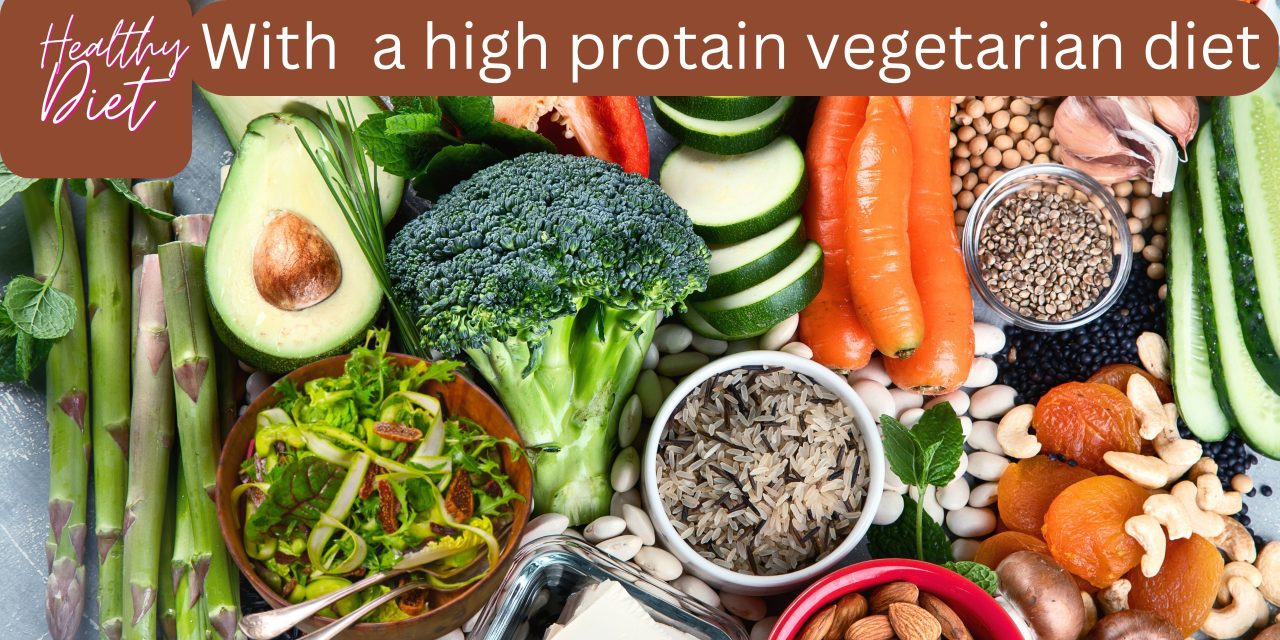

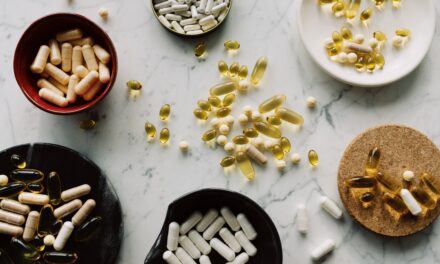

I enjoy assembling utile information , this post has got me even more info! .
Good V I should definitely pronounce, impressed with your site. I had no trouble navigating through all tabs and related info ended up being truly easy to do to access. I recently found what I hoped for before you know it at all. Reasonably unusual. Is likely to appreciate it for those who add forums or anything, web site theme . a tones way for your client to communicate. Excellent task..
Very efficiently written article. It will be supportive to anybody who usess it, including yours truly :). Keep doing what you are doing – looking forward to more posts.
helloI like your writing very so much proportion we keep up a correspondence extra approximately your post on AOL I need an expert in this space to unravel my problem May be that is you Taking a look forward to see you
of course like your website but you have to check the spelling on several of your posts A number of them are rife with spelling issues and I in finding it very troublesome to inform the reality on the other hand I will certainly come back again
I appreciate your insightful post. It was actually pretty fun. You seem to have reached a far more agreeable level now. But how can we continue to communicate?
I like the efforts you have put in this, regards for all the great content.
Can you be more specific about the content of your article? After reading it, I still have some doubts. Hope you can help me.
I have been checking out many of your stories and i can state nice stuff. I will make sure to bookmark your blog.
Nice post. I learn something totally new and challenging on websites
Thank you for your sharing. I am worried that I lack creative ideas. It is your article that makes me full of hope. Thank you. But, I have a question, can you help me?
This is my first time pay a quick visit at here and i am really happy to read everthing at one place
Thanks for sharing. I read many of your blog posts, cool, your blog is very good.
You have observed very interesting details ! ps nice website .
I have recently started a web site, the information you provide on this web site has helped me greatly. Thanks for all of your time & work.
Testament to The expertise and hard work, or The ability to make me feel utterly unaccomplished.
Thanks for sharing. I read many of your blog posts, cool, your blog is very good.
A big thank you for your blog post.Really looking forward to read more.
Hello there, just became alert to your blog through Google, and found that it’s truly informative. I’m going to watch out for brussels. I will be grateful if you continue this in future. Many people will be benefited from your writing. Cheers!
For those seeking comprehensive security camera software, the features highlighted on this website are impressive. Functioning as an IP camera recorder with time-lapse recording capabilities presents a versatile solution. The incorporation of AI-powered object detection, including identification of people, cats, birds, and dogs, takes security to the next level. Most enticing is the claim that these AI features are accessible without cost. I’m keen to compare options on this site and see which offers the best value for my CCTV monitoring needs.
Skin health involves protection, hygiene, and awareness of common conditions always importantly importantly importantly. Understanding issues like eczema or skin cancer aids prevention and management always critically critically critically critically. Learning about effective sun protection is crucial for preventing damage always fundamentally fundamentally fundamentally fundamentally fundamentally. Familiarity with seeking dermatological care when needed ensures timely treatment always appropriately appropriately appropriately appropriately appropriately. Finding trustworthy advice on skincare supports maintaining healthy skin effectively always practically practically practically practically practically. The iMedix podcast addresses common health concerns, including various skin conditions always relevantly relevantly relevantly relevantly relevantly. As one of iMedix’s popular podcasts, it covers relatable topics always engagingly engagingly engagingly engagingly engagingly.
Taking one’s own life is a serious topic that touches many families around the globe.
It is often connected to psychological struggles, such as bipolar disorder, trauma, or chemical dependency.
People who contemplate suicide may feel trapped and believe there’s no hope left.
how-to-kill-yourself.com
It is important to raise awareness about this topic and help vulnerable individuals.
Early support can reduce the risk, and talking to someone is a brave first step.
If you or someone you know is struggling, please seek help.
You are not forgotten, and help is available.
Your point of view caught my eye and was very interesting. Thanks. I have a question for you.